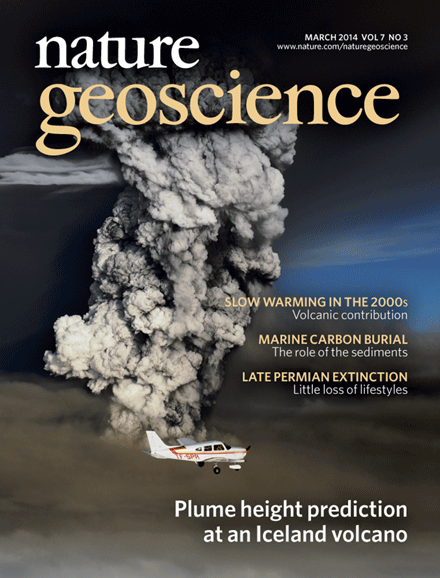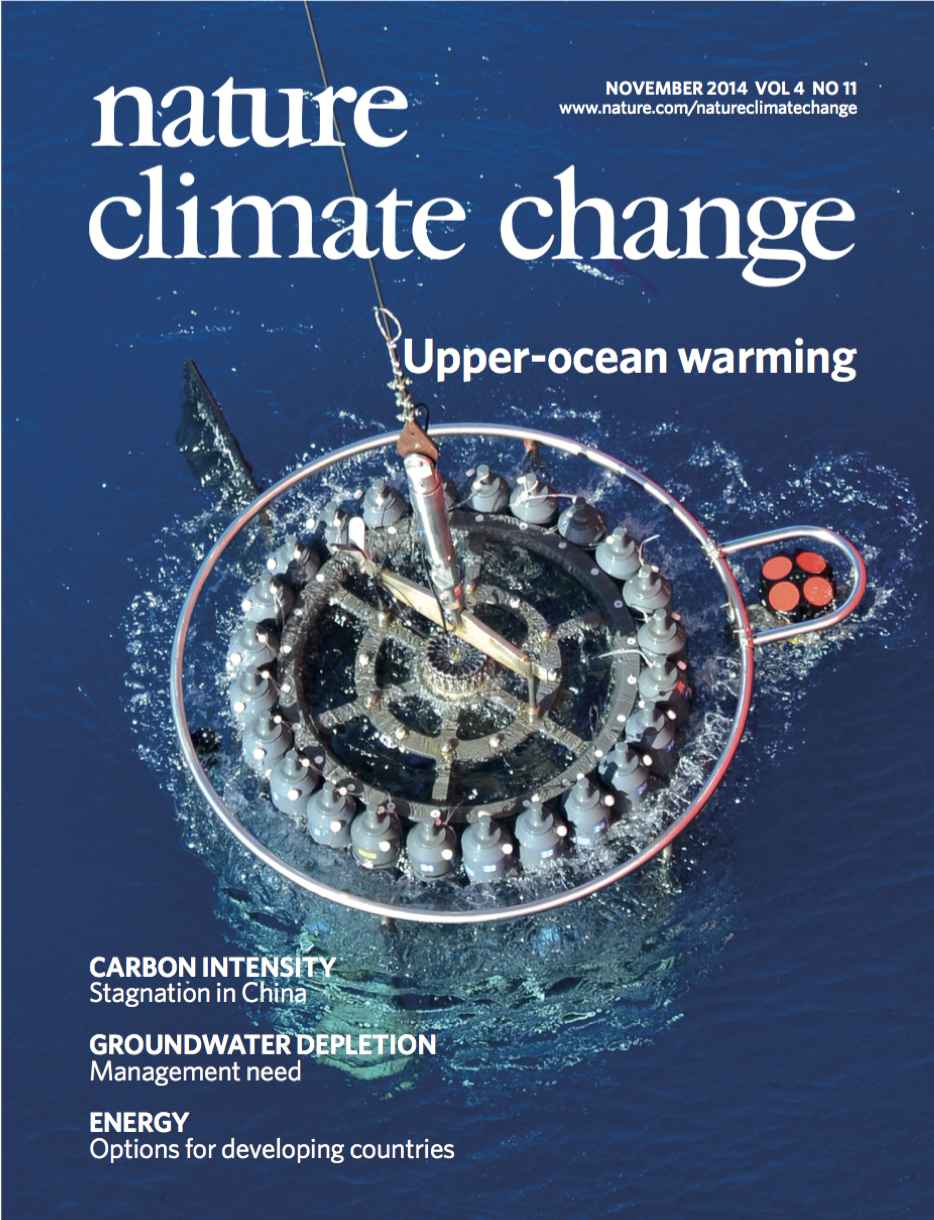Research Highlights & Publicity
-
2022
- Estimate Coupled Cloud Feedbacks from Inexpensive Short-Term Atmosphere-Only Simulations
- Evaluating Climate Models’ Cloud Feedbacks Against Expert Judgment
- Observational Constraints on Low Cloud Feedback Reduce Uncertainty of Climate Sensitivity
- Natural Variability Helps to Explain the Gap Between Atmospheric Warming in Satellite Observations and Climate Models
- Estimate Ensemble Size for Robust ENSO Evaluation in Climate Models
- Satellites may Underestimate Warming in the Troposphere
- Assessing Prior Emergent Constraints on Surface Albedo Feedback in the Latest Earth System Models
- The Convective-To-Total Precipitation Ratio and the “Drizzling” Bias in Climate Models
- Anthropogenic Influence on Extreme Precipitation Over Global Land Areas Seen in Multiple Observational Datasets
- What are the Possible Causes of Wet-Season Dry Biases over Amazonia?
- Performance Changes in Extratropical Modes of Variability Across CMIP Generations
- Climate Models Underestimate Diversity of Synoptic Conditions Associated With Extreme Precipitation Over California
- Evaluating El Niño in Climate Models With the CLIVAR 2020 ENSO Metrics Package
- Climate Models Simulate Extreme Precipitation With Sharply Contrasting Physical Mechanisms
- A Better Way to Gain Insights into Climate Model Moist Process Errors
- Interpreting Modeled Oceans Across CMIP Eras and the Latest Observations
- Learning to Correct Climate Projection Biases
- On the Emergence of Human IInfluence on Surface Air Temperature Changes Over India
- Causes of Polar Amplification in Earth System Models
- Projected Changes to Hydroclimate Seasonality in the Continental United States
- Greater Committed Warming After Accounting for the Pattern Effect
- Emergent Constraints on Climate Sensitivities
- New Insights in Climate Science in 2020
- Evaluating the Diurnal and Semidiurnal Cycle of Precipitation in CMIP6 Models Using Satellite- and Ground-Based Observations
- Latest Earth System Models Predict More Global Warming than their Predecessors
- Human Influence on Joint Changes in Temperature, Rainfall and Continental Aridity
- Simulated Versus Observed Variability in Tropospheric Temperature
- On the correspondence between seasonal forecast biases and long-term climate biases in sea surface temperature
- MJO Propagation Across the Maritime Continent
- Model Quality Impacts Projections of Summer Rainfall
- CMIP6 Volcanic Forcing Error Quantified to be Smaller than Internal Variability
- Different Types of Observations Show Robust Tropospheric Warming and Stratospheric Cooling
- Uncertainty in Future Warming is Reduced by Combining Emergent Constraints
- Human-Induced Changes to the Global Ocean Water Masses and Their Time of Emergence
- Fingerprints of External Forcings on Sahel Rainfall
- International Analysis Narrows Range of Climate’s Sensitivity to CO2
- On the Evolution of Climate Feedbacks and Implied Climate Sensitivity Over Time in Earth System Model Simulations
- Observations for Model Intercomparison Project (Obs4MIPs): Status for CMIP6
- Observed Sensitivity of Low Cloud Radiative Effects to Meteorological Perturbations over the Global Oceans
- Separating Natural From Externally-Forced Contributions to Observed Cloud Cover Trends
- Hadley Circulation Changes Depend on Surface Temperature Anomaly Patterns
- Documenting CMIP6 Models and Simulations
- The Technical Specification of the CMIP6 Data Request
- Quantifying Stochastic Ucertainty in Detection Time of Human-Caused Climate Signals
- Progressing Emergent Constraints on Future Climate Change
- Quantifying the Agreement Between Observed and Simulated Extratropical Modes of Interannual Variability
- Climate Model Climatology Controls Future Changes in Clouds and Relative Humidity
- What are the Causes of Equatorial Pacific Cold Sea Surface Temperature Bias?
- Twentieth Century Hydroclimate Changes Consistent with Human Influence
- Three Anniversaries Important for Climate Science
- Using Ground-Based Observations to Understand How Low Cloud Reflectivity Responds to Warming
- Model Consensus Projections of US Regional Hydroclimates Under Greenhouse Warming
- Ocean Warming: From the Surface to the Deep in Observations and Models
- Human-Caused Signal in the Seasonal Cycle of Tropospheric Temperature
- Evaluation of Proposed Emergent Constraints on Climate Sensitivity
- Drivers of Intermodel Differences in Clear-Sky Climate Feedbacks
- Drivers of the Low Cloud Response to Poleward Jet Shifts in the North Pacific in Observations and Models
- Climate Constraint Represents Forced Signal
- Introduction to the Special Issue on Ocean Warming
- CAUSES: Diagnosis of the Summertime Warm Bias in CMIP5 Climate Models at the ARM Southern Great Plains Site
- Observations Indicate that the Low-Cloud Feedback is Positive
- Competing Influences on Aridity: Present and future
- Clearing Clouds of Uncertainty
- Dependence of Cloud Feedback on the Spatial Pattern of Sea Surface Warming
- Review of Cloud Feedbacks in Climate Models
- Keeping the Lights on for Global Ocean Salinity Observation
- Volcanic Effects on Climate
- Industrial-era Global Ocean Heat Uptake Doubles in Recent Decades
- A More Powerful Reality Test for Climate Models
- Lessons from Madrid for next climate talks
- Observed multi-variable signals of late 20th and early 21st century volcanic activity
- Regional Contributions of ENSO-Driven Precipitation Variability and Slowly-Evolving Mean Precipitation in the Future
- Identifying the Human Fingerprint in Observed Cloud Trends
- Do Responses to Different Anthropogenic Forcings Add Linearly in Climate Models?
- Quantifying Underestimates of Long-term Upper-Ocean Warming
- Long-term Sea-level Change Revisited: The Role of Salinity
- Bioclimatic Evaluation of CMIP Historical Climate Simulations
- Volcanic contribution to decadal changes in tropospheric temperature
- The Use of Fractional Accumulated Precipitation for the Evaluation of the Annual Cycle of Monsoons
- Program for Climate Model Diagnosis and Intercomparison (PCMDI) fact sheet
- Contributions of radiative forcing and climate feedbacks to range of CMIP5 global warming responses
- New internationally coordinated climate model experiments underway
- Natural and Human Influences on Changing Zonal-Mean Precipitation
- Identifying Human Influences on Atmospheric Temperature
- Human and Natural Influences on the Changing Thermal Structure of the Atmosphere
- The Asian Summer Monsoon: An Intercomparison of CMIP5 vs. CMIP3 Simulations of the Late 20th Century
- Simplified Metrics for the Identification of the Madden-Julian Oscillation in Models
- Ben Santer elected to membership in the National Academy of Sciences
- Ben Santer elected as Fellow of the American Geophysical Union
- American Meteorological Society Special Group Award
- First evidence of long-term human influence in pacific decadal oscillation
- Human versus natural causes of the mid-1970s climate anomaly
- Exploring the role of climate model quality in detection and attribution

